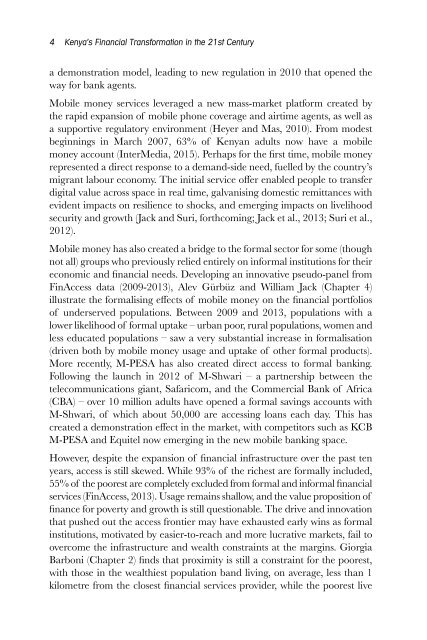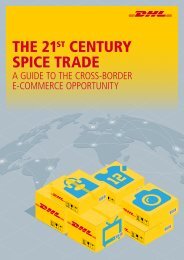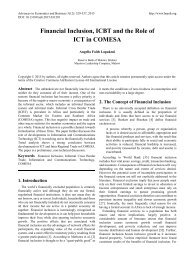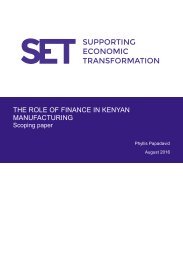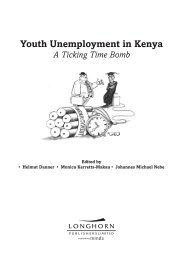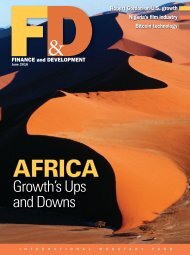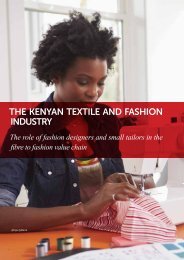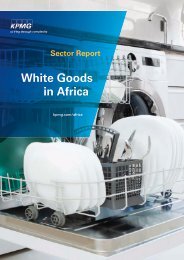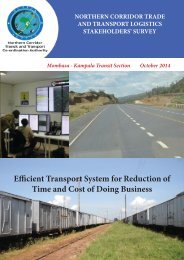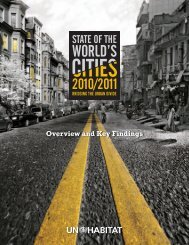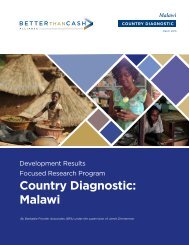in the 21st Century
hTOE305aYVW
hTOE305aYVW
You also want an ePaper? Increase the reach of your titles
YUMPU automatically turns print PDFs into web optimized ePapers that Google loves.
4 Kenya’s F<strong>in</strong>ancial Transformation <strong>in</strong> <strong>the</strong> <strong>21st</strong> <strong>Century</strong><br />
a demonstration model, lead<strong>in</strong>g to new regulation <strong>in</strong> 2010 that opened <strong>the</strong><br />
way for bank agents.<br />
Mobile money services leveraged a new mass-market platform created by<br />
<strong>the</strong> rapid expansion of mobile phone coverage and airtime agents, as well as<br />
a supportive regulatory environment (Heyer and Mas, 2010). From modest<br />
beg<strong>in</strong>n<strong>in</strong>gs <strong>in</strong> March 2007, 63% of Kenyan adults now have a mobile<br />
money account (InterMedia, 2015). Perhaps for <strong>the</strong> first time, mobile money<br />
represented a direct response to a demand-side need, fuelled by <strong>the</strong> country’s<br />
migrant labour economy. The <strong>in</strong>itial service offer enabled people to transfer<br />
digital value across space <strong>in</strong> real time, galvanis<strong>in</strong>g domestic remittances with<br />
evident impacts on resilience to shocks, and emerg<strong>in</strong>g impacts on livelihood<br />
security and growth (Jack and Suri, forthcom<strong>in</strong>g; Jack et al., 2013; Suri et al.,<br />
2012).<br />
Mobile money has also created a bridge to <strong>the</strong> formal sector for some (though<br />
not all) groups who previously relied entirely on <strong>in</strong>formal <strong>in</strong>stitutions for <strong>the</strong>ir<br />
economic and f<strong>in</strong>ancial needs. Develop<strong>in</strong>g an <strong>in</strong>novative pseudo-panel from<br />
F<strong>in</strong>Access data (2009-2013), Alev Gürbüz and William Jack (Chapter 4)<br />
illustrate <strong>the</strong> formalis<strong>in</strong>g effects of mobile money on <strong>the</strong> f<strong>in</strong>ancial portfolios<br />
of underserved populations. Between 2009 and 2013, populations with a<br />
lower likelihood of formal uptake – urban poor, rural populations, women and<br />
less educated populations – saw a very substantial <strong>in</strong>crease <strong>in</strong> formalisation<br />
(driven both by mobile money usage and uptake of o<strong>the</strong>r formal products).<br />
More recently, M-PESA has also created direct access to formal bank<strong>in</strong>g.<br />
Follow<strong>in</strong>g <strong>the</strong> launch <strong>in</strong> 2012 of M-Shwari – a partnership between <strong>the</strong><br />
telecommunications giant, Safaricom, and <strong>the</strong> Commercial Bank of Africa<br />
(CBA) – over 10 million adults have opened a formal sav<strong>in</strong>gs accounts with<br />
M-Shwari, of which about 50,000 are access<strong>in</strong>g loans each day. This has<br />
created a demonstration effect <strong>in</strong> <strong>the</strong> market, with competitors such as KCB<br />
M-PESA and Equitel now emerg<strong>in</strong>g <strong>in</strong> <strong>the</strong> new mobile bank<strong>in</strong>g space.<br />
However, despite <strong>the</strong> expansion of f<strong>in</strong>ancial <strong>in</strong>frastructure over <strong>the</strong> past ten<br />
years, access is still skewed. While 93% of <strong>the</strong> richest are formally <strong>in</strong>cluded,<br />
55% of <strong>the</strong> poorest are completely excluded from formal and <strong>in</strong>formal f<strong>in</strong>ancial<br />
services (F<strong>in</strong>Access, 2013). Usage rema<strong>in</strong>s shallow, and <strong>the</strong> value proposition of<br />
f<strong>in</strong>ance for poverty and growth is still questionable. The drive and <strong>in</strong>novation<br />
that pushed out <strong>the</strong> access frontier may have exhausted early w<strong>in</strong>s as formal<br />
<strong>in</strong>stitutions, motivated by easier-to-reach and more lucrative markets, fail to<br />
overcome <strong>the</strong> <strong>in</strong>frastructure and wealth constra<strong>in</strong>ts at <strong>the</strong> marg<strong>in</strong>s. Giorgia<br />
Barboni (Chapter 2) f<strong>in</strong>ds that proximity is still a constra<strong>in</strong>t for <strong>the</strong> poorest,<br />
with those <strong>in</strong> <strong>the</strong> wealthiest population band liv<strong>in</strong>g, on average, less than 1<br />
kilometre from <strong>the</strong> closest f<strong>in</strong>ancial services provider, while <strong>the</strong> poorest live


